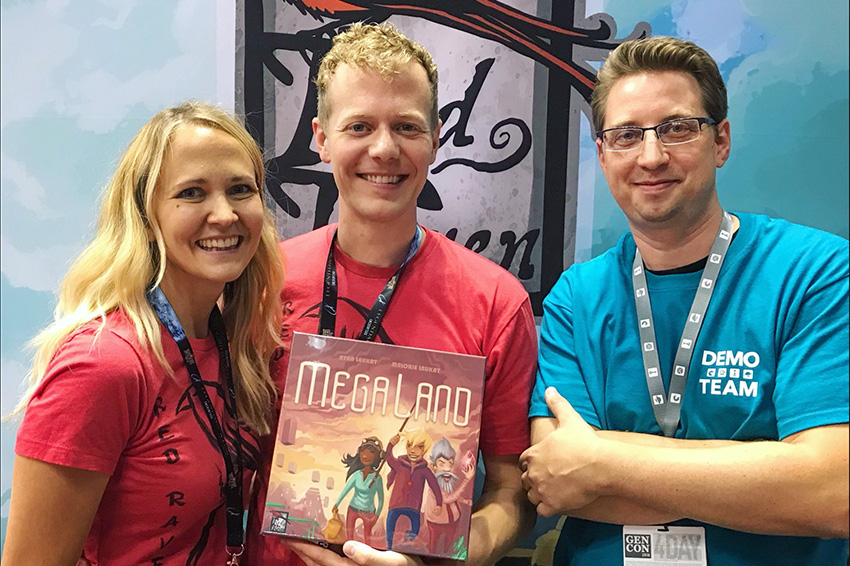Alongside several members of Mindclash Games, I’ve been giving lectures and running workshops on game design, development, and publishing over the past few years. We've had many classes pass through our hands, and every single time – independently of one another – the same question arises from students: “How did you get into the board game industry? And what did you have to study for that?”
But when the answer comes – namely, that among our in-house board game designers there are mechanical and software engineers, marketers, and sociologists (that’s me!) – they start to get a little uncertain. So, there is no royal road, no single background that gives someone a clearer path into the world of board game design.
I always try to immediately ease their disappointment by pointing out that this is actually a strength: board game designers come from a thousand different backgrounds, and any knowledge or experience they’ve picked up in life can help them develop their own unique design style.
In the following, I’d like to paint a colorful picture of some of today’s famous board game designers to show how many different paths can lead to creating games that capture the attention of gamers around the world. These game creators are proof that the road to success in game design is as diverse as the games themselves.
Martin Wallace – Brass, Age of Steam
Let’s start at the top: at the time of writing this blog post, Brass: Birmingham sits firmly at the #1 spot on the BoardGameGeek rankings (and doesn’t look like it plans to give up that place anytime soon). Martin Wallace’s cult classic is a great example of the themes that are close to his heart: British history and economics.
And it’s no wonder he was drawn to these topics – he studied to become a history teacher. According to him, he’s not especially emotionally attached to the theme, but it’s much easier to begin designing when you know more than the average person about a historical period – and have a shelf full of reference books to back it up. Wallace’s signature game mechanics often reflect structured economic interactions rooted in history.
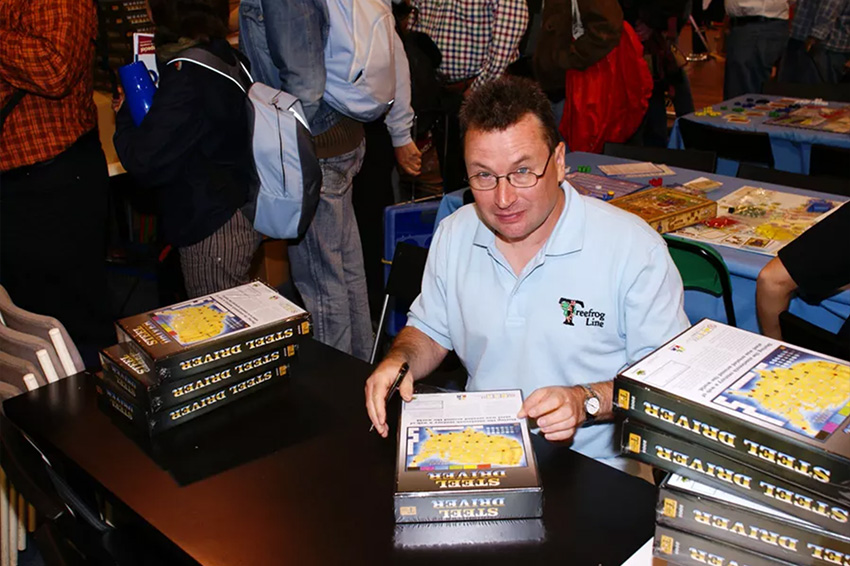
Reiner Knizia – Tigris & Euphrates, Modern Art
The king of quantity, Knizia boasts more than 700 published game titles. With so many games in circulation, it's no surprise that “Knizia-esque” has become a genre of its own.
No one blinks an eye when they hear he holds a PhD in mathematics and later applied his skills in the business world. He worked as a data analyst and project manager for major European financial companies, and the influence of that is clear in his games, which often feature clean-cut economic systems, risk analysis, and bidding mechanics. These signature game mechanics have helped cement his place among famous board game designers, and his approach is studied by many aspiring board game designers today.
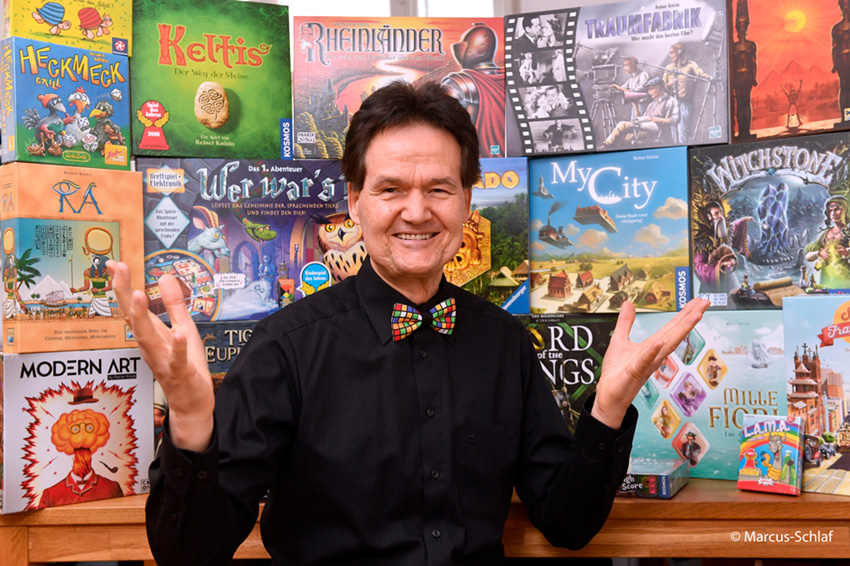
Isaac Childres – Gloomhaven, Frosthaven, Forge War
Let’s switch genres – goodbye euro games, here comes a hardcore dungeon crawler and its creator, Isaac Childres!
You might assume that the designer of a rich narrative fantasy game has a background in literature, ancient mythology, or martial arts, right? But the truth couldn’t be further from that: Childres is a physicist, who wrote his PhD dissertation titled “Effects of Energetic Irradiation on Materials and Devices Based on Graphene and Topological Insulators.”. Serious stuff, indeed. According to him, the knowledge he gained there didn’t vanish when he turned to game design. The precision thinking and hypothesis-testing techniques he honed during his research became invaluable in playtesting and writing rulebooks. His board game designs, especially Gloomhaven, are praised for their balance of narrative depth and mechanical complexity – hallmarks of his signature game mechanics.

Cole Wehrle – Root, Pax Pamir: Second Edition
Many consider Cole Wehrle one of the most innovative minds in modern board games. He fearlessly adopts unusual and highly interactive mechanics and borrows narrative styles from wargaming, reimagining them for broader audiences.
Wehrle earned degrees in journalism and English literature, and as an academic, he focused on literary representations of the British Empire in the early 19th century. His games often feel like interactive essays, where he outlines the framework and rules of the game world based on his well-founded perspectives – letting players follow his train of thought around the table.
It’s no surprise that his published board game designs are accompanied by highly readable, well-researched essays and that his designer diaries are overflowing with rich context and insight. This game designer spotlight reveals how academic experience can transform into powerful storytelling and gameplay.
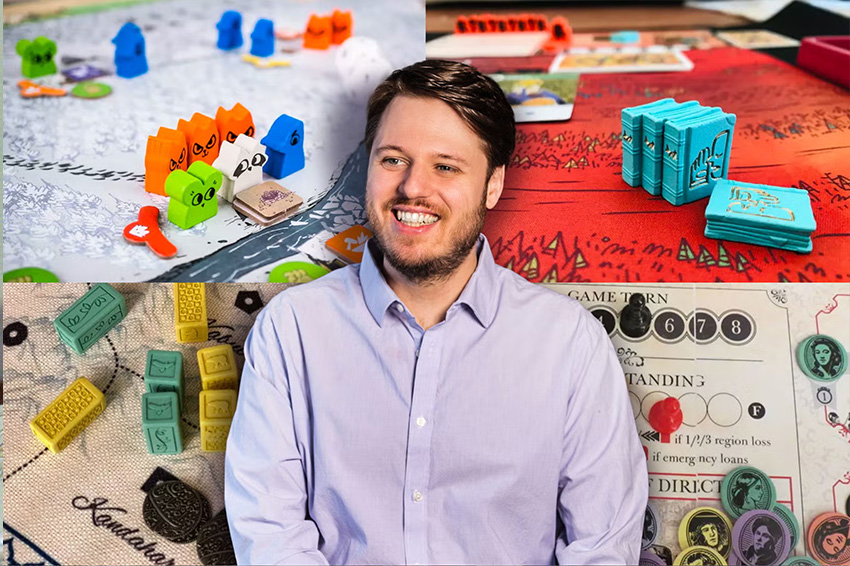
Elizabeth Hargrave – Wingspan, The Fox Experiment
Today, we can find many complex board games with nature themes on store shelves, but when Wingspan was released, it was truly something new. Considering Elizabeth Hargrave’s professional background, after earning a degree in her field, she began working at the U.S. Department of Health and Human Services, a role that involved serious organizational tasks while focusing on the human sphere.
However, it’s not only one’s main job that can serve as a foundation for blossoming into a game designer: alongside her work, Hargrave was an enthusiastic naturalist who frequently went on birdwatching trips, which clearly provided the inspiration for Wingspan. When someone immerses themselves in a wonderful topic, like, in this case, exploring nature, they naturally want to share it with others.
In addition to her personal interest, Hargrave has been driven in all her designs by the goal of drawing others’ attention to fascinating aspects of the natural world. This is how she went on to create games not only about birds, but also about migrating butterflies, the study of fox behavior, and the unique underground world of fungi. And we can see that her enthusiasm is contagious, today many games aim to present the wonders of nature authentically, rather than just using it as an illustration for dry mechanics.
And what did her original profession contribute to game design, beyond her hobby? According to her, her previous work also required her to model the complex systems of real life and calibrate them based on real-world data, which is a perfect fit for designing games (models) that represent nature.

Klaus Teuber – Catan, Hoity Toity
For many, Klaus Teuber’s classic Catan was their first encounter with modern board games – and it’s since become a pop culture icon. But Teuber wasn’t just a one-hit wonder; before Catan, he had already won the Spiel des Jahres award three times.
Before becoming a full-time designer, Teuber worked in a dental lab employing over sixty people, which he eventually ended up managing. According to him, the job became extremely stressful, and he longed for something more creative. That desire for escape seems to have permeated his work ever since.
He read many fantasy books, and he started to design his first game, Barbarossa, which is about clay-shaping and riddle solving. He once said: “As you know, there are moments when you close a book really sad that it's over. After finishing the last page, you often feel like you've lost a friend – to be somewhat melodramatic. So I was looking for a way to keep the book alive a little longer. Creating a game seemed the perfect solution. In this game, I was looking for a way to make riddles, to experiment with shapes and to let the players express their own creativity with clay.”His games always seem to encode freedom and creative thinking – whether in Catan’s open-ended trading or Hoity Toity’s prisoner’s-dilemma-style interactive action selection. These signature game mechanics helped Teuber become one of the most famous board game designers of his time.
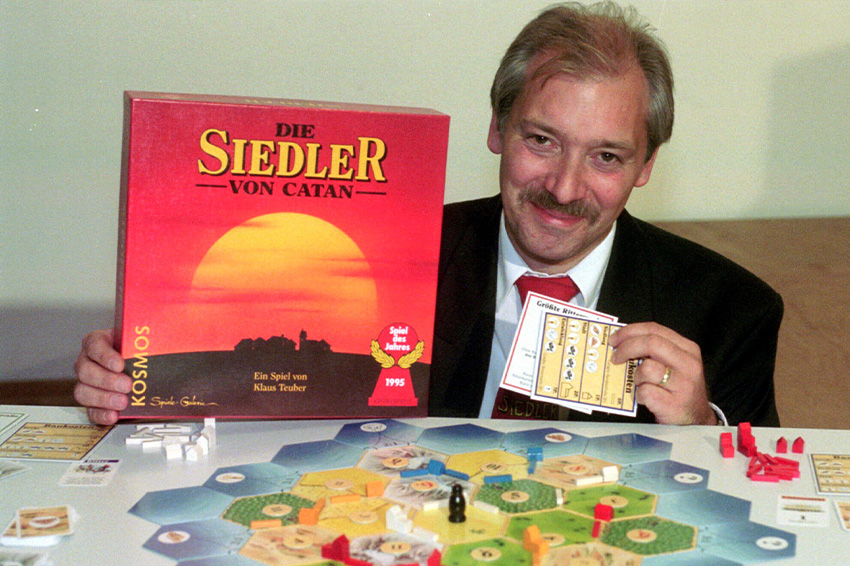
Ryan Laukat – Above and Below, Sleeping Gods
Game designers aren’t always seen as artists. While film directors and architects are often considered artists in their own right, board game designers remain somewhat mysterious to many, making it hard to reach a general consensus on the topic.
Ryan Laukat, however, is widely recognized – even by the harshest critics – as a true Renaissance man: he designs, develops, illustrates, and publishes all of his games, most of which take place in the imagined world of Arzium.
Even in high school, he was creating new illustrations for existing games using watercolor and ink, while also playing multiple instruments and singing. His professional illustration work eventually grew into designing games for the worlds he had visualized – then he took publishing into his own hands as well.
But his artistic side never disappeared entirely. To this day, he works part-time for a wind instrument workshop, engraving and testing instruments by hand. His work as a game creator blends visual storytelling with mechanical coherence. This game designer spotlight shows how personal artistry can define the tone and feel of designer board games in a unique and memorable way.
